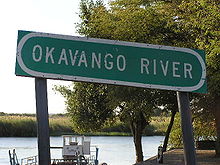Kerning (typography)

Kerning (in digital typography usually: kerning ) referred to in the typography the process, the horizontal distance (the white space ) between a plurality of letters ( Standarddickte to reduce by optical compensation such that it appears uniform and thus perceived by the viewer as pleasant).
example
The string VA illustrates the kerning:
Without kerning, a large gap appears between the two slants of the letters, especially in the running text. |
|
If the distance between the letters V and A is reduced a little, the result is a much more aesthetic appearance and a visually even letter spacing. |
More examples of kerning pairs:
Av, AV, Aw, AW, LT, LV, Ly, Ta, Te, To, Ty, T., Va, Vo, V., Ya, Yo, Y.
Undercut in the lead type
In the days of lead typesetting , the character width ( thickness ) including the unprinted space to the adjacent letters on the left and right ( meat ) was normally determined by the physical width of a single letter . Undercut was hardly possible for longer texts, as this would have been too time-consuming. It was therefore only used for relatively large letters. The cone (shaft) was cut so that the letter partially protruded into the area of the neighboring letter, i.e. was in front of its cone. Some of the so-called meat under the letter was cut away so that the letters could be moved closer together. For frequently occurring letter combinations, undercut pairs were cast in lead as ligatures .
Kerning in computer typesetting
Correspondingly, most TrueType , OpenType and PostScript fonts for computer typesetting contain information on the definition of kerning pairs. These are also taken into account by many common word processing programs, although this often has to be set explicitly first. In Metafont , for example, the specification is made with the ligtable definition, in Microsoft Word via character format - character spacing - kerning from font size x . In addition, most DTP programs allow you to define undercuts by hand.
Fonts without kerning
For special purposes there are also fonts without kerning, mostly these are non-proportional , i.e. H. Fonts with the same thickness, such as the typewriter font Courier .
Overlap and undercut
Although an overlap, like an undercut, is also an overlap of adjacent characters, the overlap is characterized by the fact that it is not dependent on the environment:
- Overlapping is not a subsequent (neither automatic nor manual) reduction in the distance between two characters, but is caused by the font style from the outset ; it is therefore bound to font and affects one or more special characters in a very fundamental way (namely, for example, the letter "z").
- Overlap is thus an overlap that invariably occurs in all possible combinations of characters - in contrast, is limited to lower (see the above Tailoring (kerning) Example ) few character combinations that are not fundamental, but personal in nature.
- The purpose of the overlap is not to avoid white space.
The small for the Garamond - italics always protrudes example, with its curved lower line in the area of the right following sign in.
See also
literature
- Lothar Jegensdorf: Font design and text arrangement. Ravensburg: Otto Maier Verlag 1980, ISBN 3-473-61427-0 .
- Erhard D. Stiebner, Walter Leonhard: Bruckmanns Handbuch der Schrift. Munich, Bruckmann 1992 (4), ISBN 3-8307-1230-8 .


